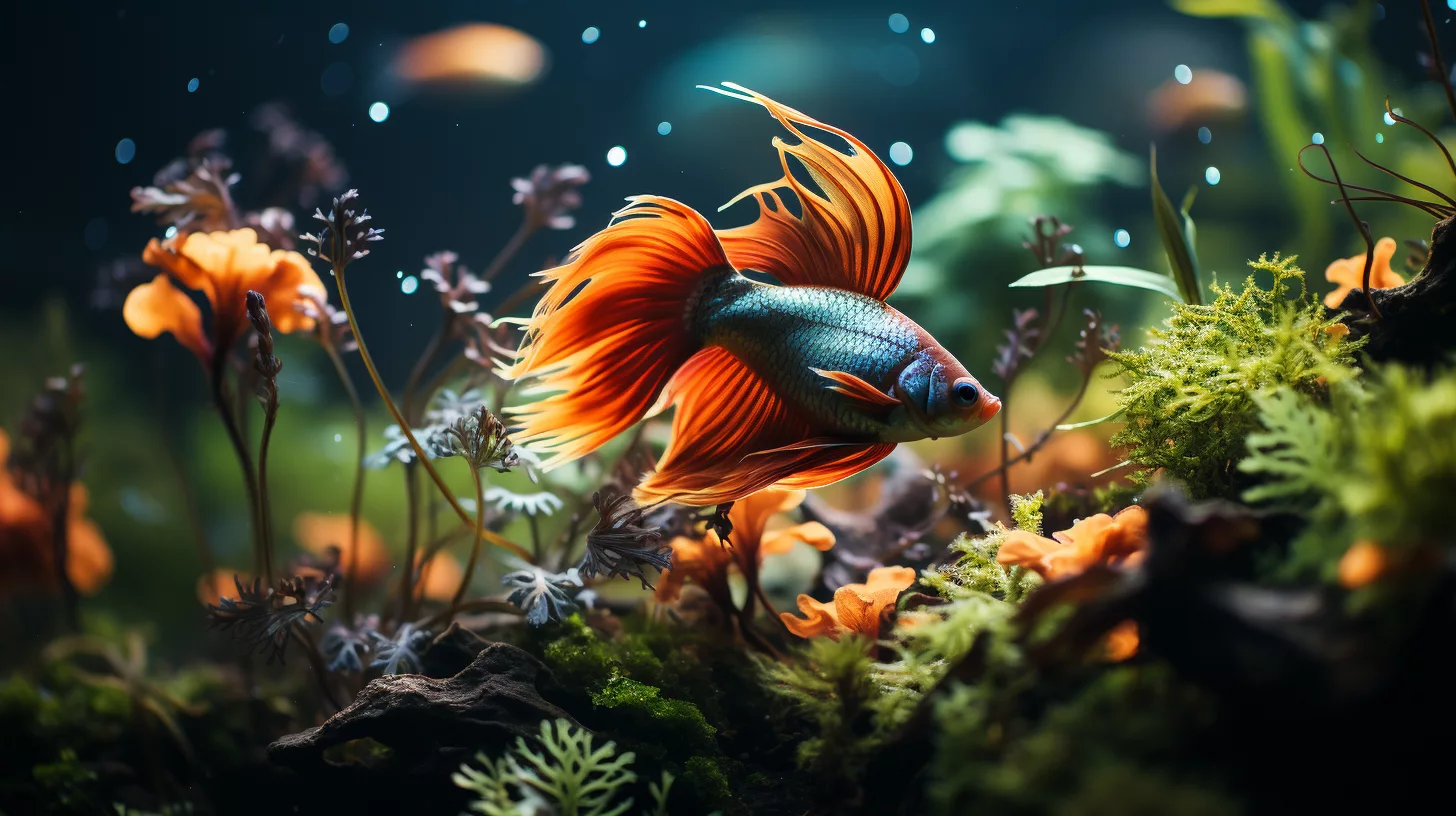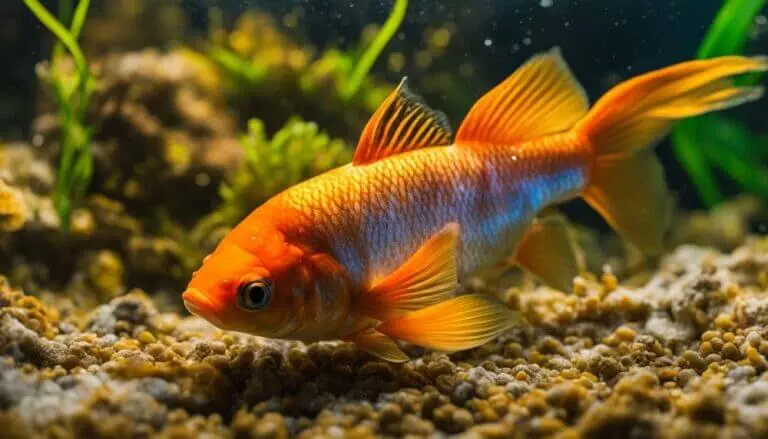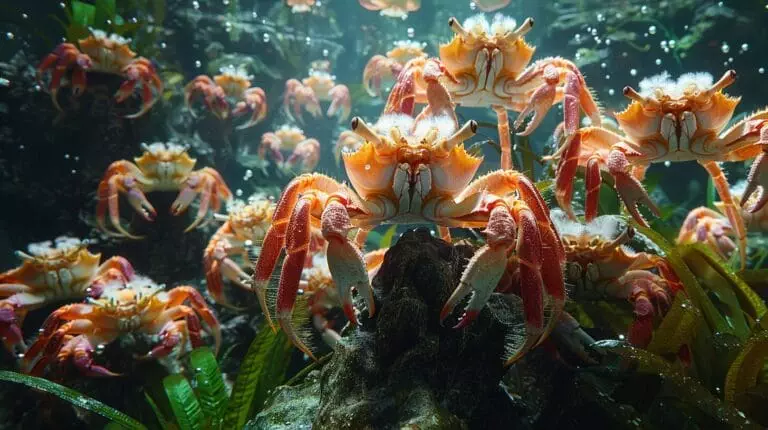Maintaining an aquarium is a dance of balance, a choreography of elements. One unusual and possibly unexpected development is the addition of pothos in the aquarium. Keeping pothos plants in aquariums isn’t just an aesthetic choice—it plays a crucial role in creating a healthier environment for your aquatic friends and reducing nitrate levels in your aquarium.
In our Pathos Plant in Fish Tank guide will explore how to seamlessly integrate it into your current setup, the benefits it brings, and how to care for it. But remember, this isn’t your run-of-the-mill houseplant. Stay with us to find out why.
Key Takeaways
- Pothos plants enhance the aesthetic appeal of fish tanks.
- Pothos plants serve a dual purpose by enhancing the tank’s look and maintaining water cleanliness.
- Pothos plants require minimal maintenance and the leaves of the pothos in particular are hardy even when not given much light.
- Pothos plants should be compatible with the fish species and other aquatic life in the tank.
Introduction to Pothos Plant in Fish Tanks
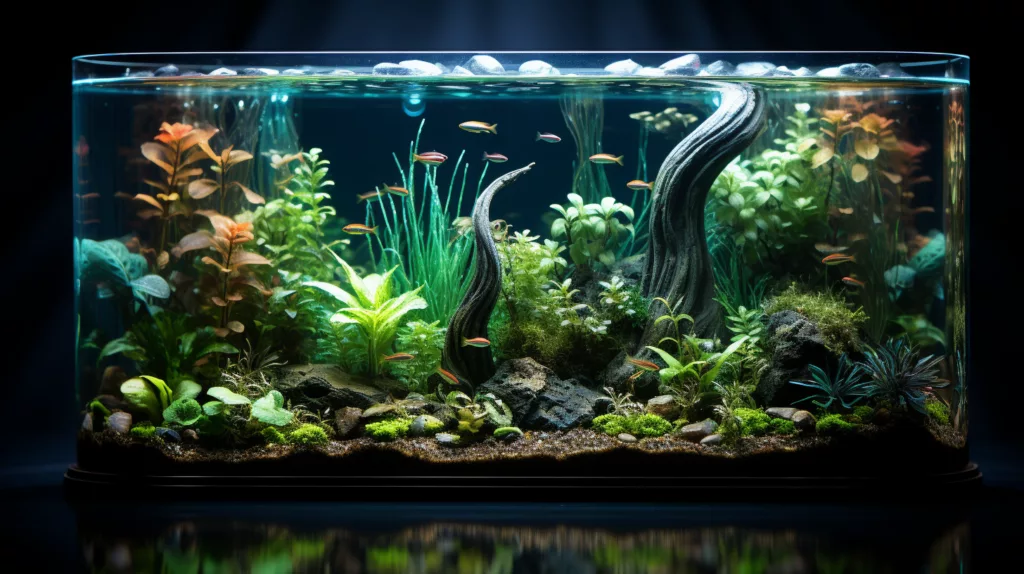
As aquarists, we frequently consider the idea of positioning pothos plants to grow in water within our fish tanks. Planting your pothos in the aquarium is not just for their aesthetic appeal, but also for their unique ability to enhance the overall ecosystem of our aquariums by means such as absorbing nitrates. Additionally, the presence of pothos plants in the aquarium can help to create a more natural and stable environment for our fish. This is particularly beneficial for species such as megalops atlanticus in freshwater, as they thrive in well-maintained and balanced ecosystems. By incorporating pothos plants into our aquarium setup, we can mimic the natural habitat of our fish and promote their health and well-being. In addition to improving water quality and creating a more natural habitat, pothos plants can also help prevent common ailments in our fish. The presence of live plants, such as pothos, can reduce the risk of swim bladder disease causes by providing a more enriching environment for our fish to thrive in. By mimicking their natural habitat, we can reduce stress and promote overall health, ultimately leading to a happier and longer lifespan for our aquatic pets.
Pothos plants, often known as ivy and perfect to grow in water, are renowned for their adaptability, in turn making them a great choice for both novice and professional aquarists. When we plant pothos in aquariums, they serve a dual purpose—they enhance the look of our tanks and become a functional part of the ecosystem, helping to maintain the water’s cleanliness and oxygen levels.
But, it’s crucial to ensure the compatibility of the pothos plant, especially how its roots are also adapted, with the fish species and other aquatic life, as some like African cichlids tend to lay their eggs in your tank.
Compatibility of Pothos Plants in Aquariums
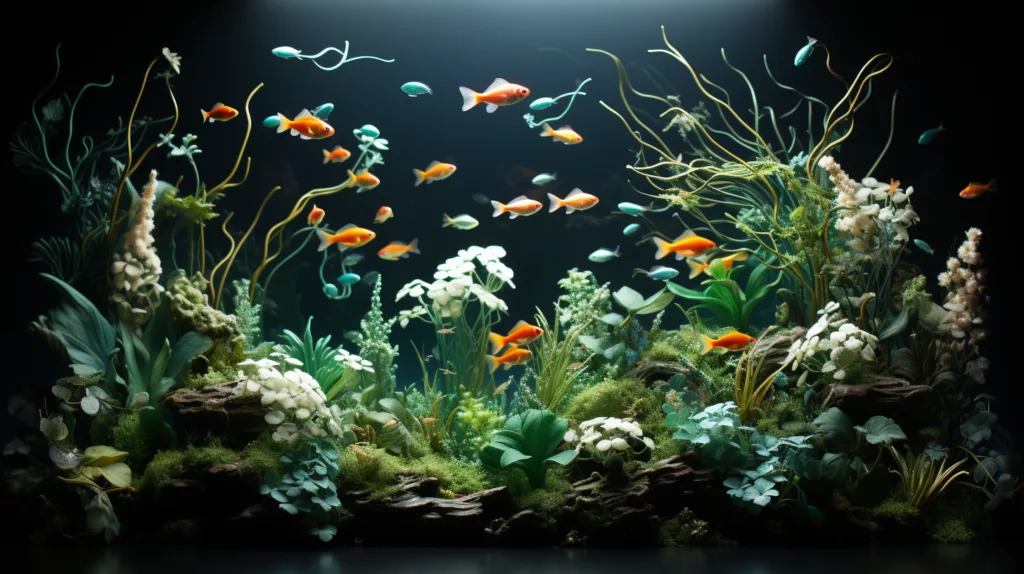
When considering adding pothos plants to aquariums, it’s essential to explore their compatibility with different types of setups and fish species. Pothos plants, growing as vine-like aquarium plants, offer benefits such as oxygenation, nitrate absorption, and absorbing nutrients from the water. However, their compatibility varies, depending on several factors:
- The type of aquarium setup: Pothos plants thrive in freshwater tanks due to nutrient-rich water, survive but mightn’t thrive as well in saltwater tanks due to high salt content, and can adapt to brackish water tanks, but growth might be slower.
- The species of aquarium fish: Herbivorous fish might nibble on the pothos, which could damage the plant, while carnivorous fish won’t bother the plant at all.
- The positioning of the pothos plant and its stem in the aquariumPothos plants, cuttings of a pothos, to be precise, can adapt to being fully submerged but mightn’t grow as well due to lack of access to atmospheric CO2. Partial submersion is ideal for the pothos vine, allowing the leaves to access atmospheric CO2 for optimal growth.
Benefits and Care for Pothos Plants in Fish Tanks
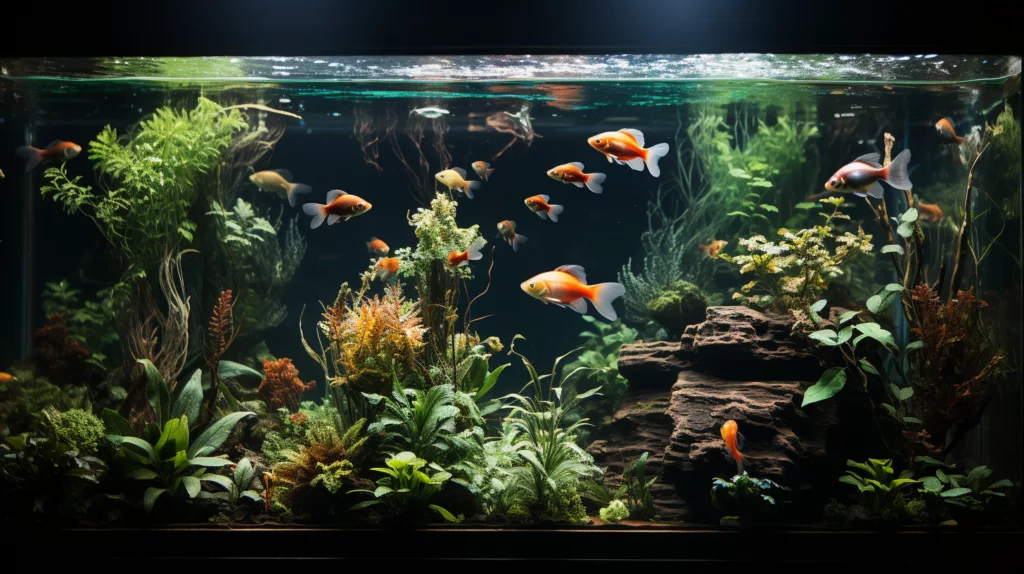
Pothos plants in fish tanks not only elevate the aesthetic appeal but also play a crucial role in maintaining water quality. These plants are hardy and thrive in varying conditions, absorbing nitrates to keep the water clean and safe for your aquatic pets.
When planning to grow pothos in an aquarium, choose a healthy plant with bright green leaves and no signs of disease. Rinse it thoroughly before placing it in your tank. Only the roots should be submerged in water, while the leaves must remain above water to prevent rotting. Regular pruning helps stimulate new growth.
Here’s a quick care guide:
| Care Factor | Description | Importance |
|---|---|---|
| Placement | Only submerge roots in water | Prevents leaf rot |
| Pruning | Regularly trim the plant | Controls size, promotes growth |
| Cleaning | Rinse before placing in the tank | Removes harmful chemicals |
Managing Potential Challenges with Pothos Plants in Fish Tanks
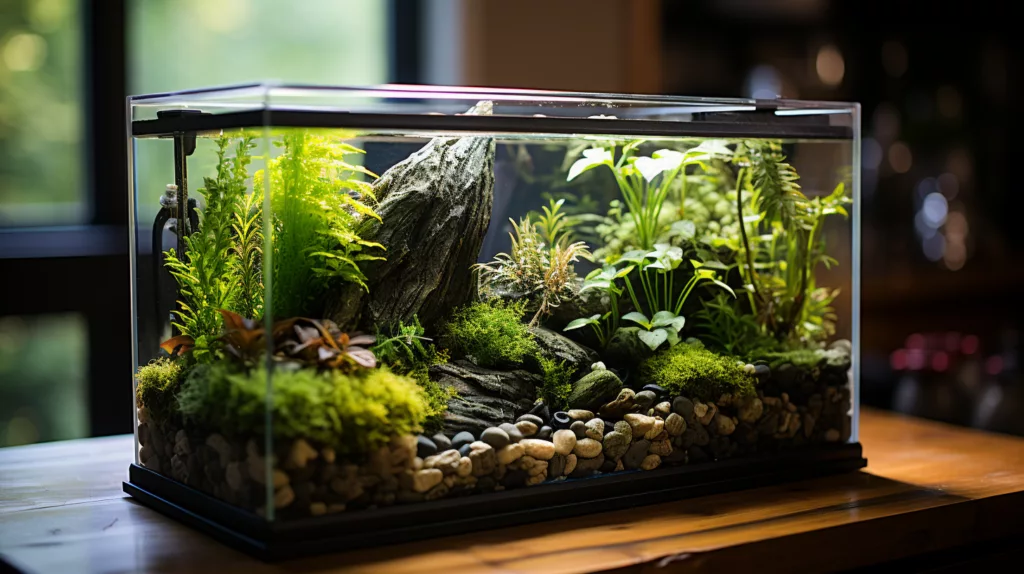
While caring for pothos in fish tanks and managing how much light the pothos can grow with is crucial, it’s equally important to manage potential challenges such as overgrowth, algae growth, root rot, and the plant’s impact on water conditions.
- Dealing with Overgrowth: Regularly trim the pothos plant underwater to control its spread. Be mindful of the roots—if they become too extensive, they can dominate the tank.
- Preventing Algae Growth and Root Rot: Algae thrive on decaying plant matter. Keep the tank and the roots of the pothos plant clean and remove any decaying leaves promptly. Ensure proper water circulation to prevent stagnant water which can cause root rot.
- Maintaining Water Conditions: Pothos can change the pH and oxygen levels in the water. Regularly test and adjust water parameters to keep your fish healthy.
Final Tips for Success with Pothos Plants in Fish Tanks
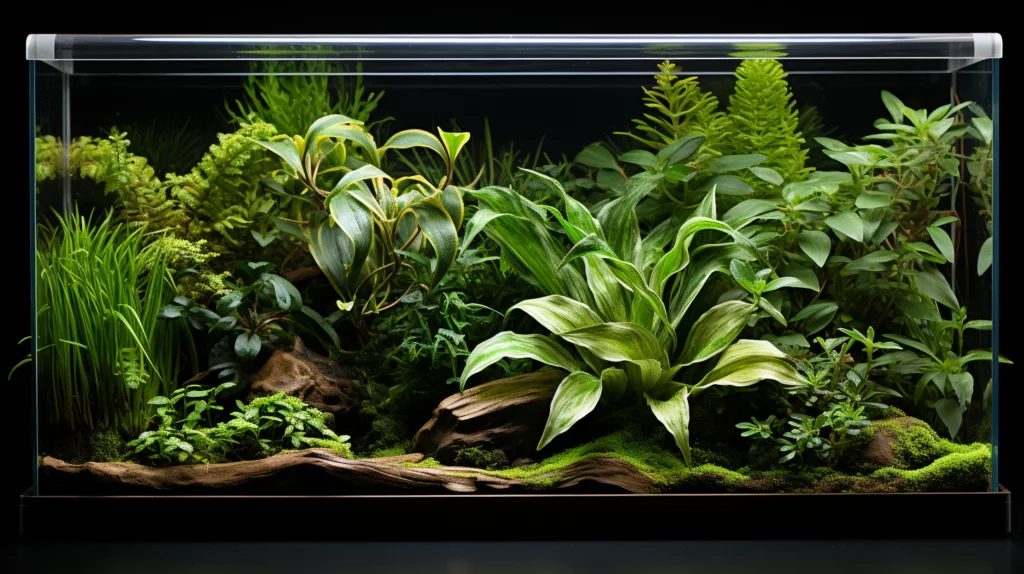
Growing pothos in an aquarium isn’t only about enhancing your fish tank’s aesthetic appeal, but also about providing a healthier environment for your aquatic friends.
Monitor the growth of your pothos roots and the condition of the aquarium water regularly, especially during water changes. Ensure your pothos plant is placed where it can comfortably grow without blocking the tank’s light sources, keeping in mind that the plant will grow towards indirect sunlight. This will enable it to effectively absorb nitrates and other toxins, enhancing the quality of your aquarium water.
Every fish tank is unique, and how the pothos plant will grow roots for one may not work for another. There’s no need to fear experimenting with varying techniques and care routines when growing pothos in your aquarium.
Can Pothos Plants Thrive in a Sand Aquarium Environment?
Pothos plants can thrive in a sand aquarium environment, adding beauty and natural filtration to the ecosystem. Mastering aquatic gardening with sand aquarium plants involves creating a balanced environment for both the plants and aquatic life. Pothos are versatile and low-maintenance, making them a fantastic choice for any aquarium setup.
Conclusion
We’ve walked you through the ins and outs of growing pothos plants as aquarium plants in fish tanks, highlighting in particular, the benefits of pothos in water. Pothos plants are not just compatible with saltwater aquariums, but beneficial, offering a natural filtration system and aesthetic appeal, while hardy enough to withstand varying light levels.
Yes, there may be challenges, but with proper care, you can easily overcome them. In the end, the success of your Pothos plant in your aquarium definitely depends on your patience and dedication.
So, let’s roll up our sleeves and turn our fish tanks into thriving mini ecosystems!
Frequently Asked Questions
Can I grow pothos in my fish tank?
Yes, pothos can be grown in a fish tank as an aquatic plant.
How do I place pothos in an aquarium?
You can place pothos in an aquarium by fully submerging the plant in water or by planting it in a separate container with the roots directly in the water.
What are the benefits of having pothos in my aquarium?
Pothos in an aquarium can help in reducing nitrates from the water, providing nutrients for the plant, creating a natural look in the tank, and with enough light, pothos can grow quite well.
Can pothos grow fully submerged in water?
Yes, pothos plants can grow fully submerged in water, as long as the light conditions are good and the plant receives the required nutrients.
How can I deal with nutrient deficiency for pothos in my aquarium?
To provide your aquarium the necessary nutrients, you can supplement by changing the water regularly or adding liquid fertilizers to the water with the Pothos plants.

